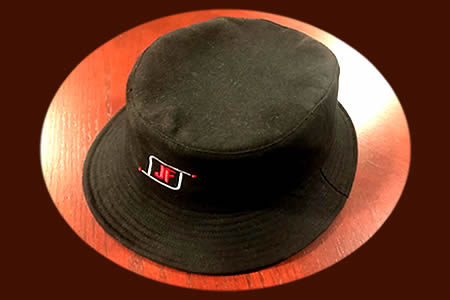The Faraday hat is an EMF protection hat that stops radio waves from being transmitted into your brain. https://paste1s.com/notes/L6QIXV is a tinfoil helmet that is commonly used by those suffering from Electromagnetic Hypersensitivity (EHS).
The tin foil hat works as a Faraday enclosure, an enclosure that shields its interior from external electrostatic charge and electromagnetic radiation by dispersing them along the exterior part of the cage.
What is the procedure? Faraday Cages Work
A Faraday cage is a metal object that acts as an electrical conductor. When an electric charge comes into the cage, the free electrons within the material immediately align themselves and cancel out the incoming field.

The efficiency of a Faraday cage depends on its shape, size and the choice of construction materials. Also, they must be accessible to ground and have gaps and seams minimized.
The most effective Faraday cages block both static electric charges and electromagnetic waves, protecting researchers who conduct sensitive tests that are affected by radiated radiation. MRI scan rooms for instance must be Faraday caged to keep radiation from disrupting diagnostic imaging.
Despite faraday hats , Faraday cages aren't completely safe. Electrons can still get through the Faraday cage, causing damage to electronics within it. This is why they're often employed in labs with high power to minimize interference and noise. faraday cap can help protect the equipment from electro-magnetic pulses (EMPs), which are powerful weapons that are designed for the purpose of neutralizing electronics.
How Faraday Fabric Works
If it's radio waves Wi-Fi, cell towers or other sources of electromagnetic radiation Interference can render these connections insecure and disrupt the functioning of devices. As a result, the most critical components are encased with protective materials such as copper foil to protect them.
But, these cages made of metal aren't the most comfortable and sturdy. That's why researchers in Drexel University have developed a Faraday fabric that is flexible and durable, as well as washable.
The fabric is an 2D material called MXene, and it can block virtually all electromagnetic radiation. In the future, clothing made of this technology might be used to shield wearables from interference , as well as individuals from harmful radiation.
Although this technology is currently in development however, it's a fascinating concept for clothing. The team is hoping that the new fabric will result in clothing that have RF-blocking pockets. This will be useful for people who want to keep their devices away from their head when they use their devices. It could also prevent the most common health issue - radiation causing brain tumors.
Faraday Cages Versus Faraday Fabric
If you're unfamiliar with Faraday cages Let's look at how they work When electromagnetic fields are brought into contact with metal conductors like aluminum mesh and aluminum mesh, it creates negative and positive particles to separate. The redistribution of charge cancels out all electromagnetic signals that enter into.
It's this process that lets utility workers be near power lines without fear of being electrocuted. It also helps to keep military equipment and telecommunication devices from interference.
But, Faraday cages can be costly and not ideal for daily use. That's where Faraday fabric is available.
Faraday Fabric Versus Tin Foil
If you've been exposed to Faraday cages you know that they're little more than a conductor that is all-encompassing that swerves electromagnetic radiation prior to it reaching sensitive electrical components contained within. This kind of shielding can also be found in elevators, scanning rooms that MRI machines are placed inside, "booster bags" that shoplifters use to circumvent electronic security tags, and even inside your microwave at home.
However, can a tin foil cap actually be an actual Faraday cage?
In order to fully block radio waves the Faraday cage should be completely sealed and enclosed.
However, a tin-foil isn't able to accomplish this, which is why it can only block radiation.
Tin foil hats can amplify radio frequency. They claim to accomplish this by making use of resonance.
